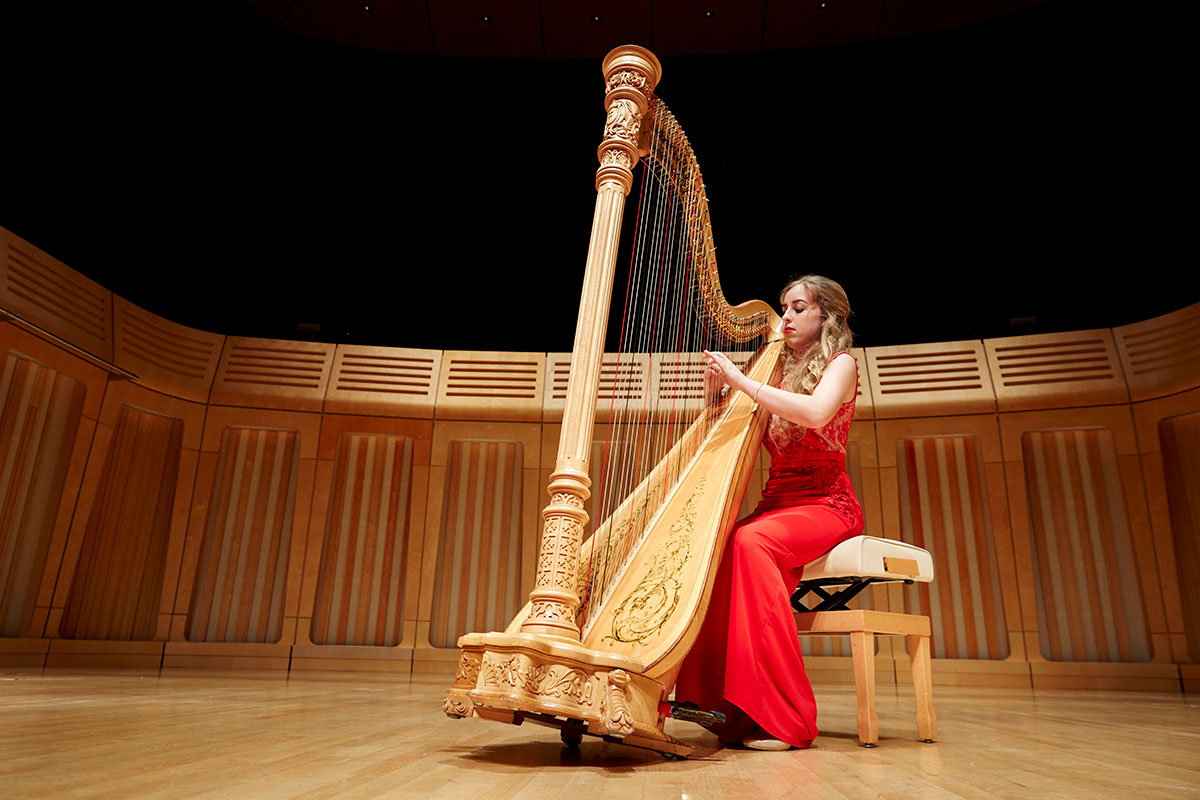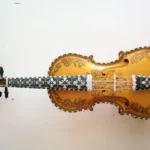
The harp is one of the oldest known musical instruments, dating back to at least 3,000 BC. It was likely first developed in ancient Mesopotamia or Egypt, where it was used in both religious and secular contexts. The earliest harps were likely small and simple, with only a few strings and a basic design.
The harp is classified as a chordophone instrument, which means it produces sound by vibrating strings. Other examples of chordophones include guitars, violins, and pianos. The harp is unique in that it is plucked rather than bowed or struck.
Harps have been found in ancient Egyptian and Sumerian tombs, indicating their use in funerary and religious rituals. The ancient Greeks also used harps in their music and poetry. The harp has been present in various cultures throughout history, from Africa to Europe to Asia.
The Irish harp is a national symbol of Ireland and appears on the country’s coat of arms. It has been used in traditional Irish music for centuries and is still a popular instrument today. The Irish harp is often played in a seated position and has a distinctive sound.
The modern concert harp typically has 47 strings, although some harps can have as many as 47 strings. The strings are made of nylon or gut and are attached to the soundboard of the harp. The strings are arranged in rows and are tuned to different pitches.
The harp is played by plucking the strings with the fingers or using a small piece of material called a plectrum. The player can use various techniques to create different sounds, including glissandos, harmonics, and tremolos. The harp is often played with both hands, although some pieces may require only one hand.
The harp has been used in various genres of music, including classical, folk, and even rock and roll. Some famous harpists include Harpo Marx, Carlos Salzedo, and Alice Giles. The harp has a unique sound that can add a touch of elegance and beauty to any piece of music.
The harp was popular during the Renaissance and Baroque periods in Europe. It was often used in courtly music and was a symbol of wealth and status. Many famous composers, including Handel, Bach, and Mozart, wrote music for the harp.
The pedal harp, which allows the player to alter the pitch of the strings, was invented in the late 18th century. It was a significant advancement in harp technology and allowed for greater flexibility and range of expression. The pedal harp is now the most common type of harp used in orchestras.
The harp is a popular instrument in orchestras and is often featured in solo pieces. It is used to create a variety of sounds, from delicate and ethereal to bold and powerful. The harp can be used to add color and texture to an orchestra’s sound, or to create a focal point in a solo performance.
The harp is often associated with angels and heavenly music in various religious traditions. It is said to have a calming and soothing effect on listeners, and its delicate sound is often used in meditation and healing practices.
Harps come in various shapes and sizes, including the concert harp, Celtic harp, and electric harp. Each type of harp has its unique sound and playing style. The Celtic harp, for example, is smaller than the concert harp and is often played in folk music.
The largest harp in the world is the Lyon & Healy concert grand harp, which stands at 6 feet 6 inches tall and weighs around 90 pounds. It has 47 strings and a range of 7 octaves. The Lyon & Healy company, based in Chicago, has been making harps since 1889 and is one of the most well-known and respected harp manufacturers in the world.
The pedal harp, also known as the concert harp, is the most commonly used harp in classical music. It typically has 47 strings and seven pedals that allow the player to change the pitch of each string by a half step.
The triple harp is a type of harp that originated in Wales and has three rows of strings. The outer rows are tuned to the same note, while the inner row is tuned to a different note. This allows the player to create a unique sound that is not possible with a single-row harp.
The harp has been used in many different genres of music, including classical, folk, and even rock. It has been used by famous musicians such as Joanna Newsom, Jimi Hendrix, and Led Zeppelin.
In Irish folklore, the harp is often associated with the mythical creature called the Sidhe, or the fairy folk. It is said that the harp was brought to Ireland by the Sidhe, and that it has the power to control the weather and to bring peace and harmony.
The harp has been used as a symbol of Ireland for centuries. It appears on the country’s coat of arms, on its euro coins, and on the logo of the Guinness beer brand.
In ancient Egypt, the harp was often used in religious ceremonies and was believed to have the power to ward off evil spirits. It was also used in the court of the pharaohs and was often played by professional musicians.
The harp was an important instrument in medieval Europe and was often played by traveling minstrels and court musicians. It was also used in churches and monasteries to accompany chants and hymns.
The harp has been used in many different types of ensembles, including orchestras, chamber music groups, and even jazz bands. It is often used to add a unique and ethereal sound to musical compositions.
The harp has inspired many famous works of literature, including the poem “The Harp That Once Through Tara’s Halls” by Thomas Moore, and the novel “The Harp in the South” by Ruth Park.
The harp is often featured in mythology and folklore from around the world. In Greek mythology, the god Apollo is said to have played the harp, while in Norse mythology, the god Odin is said to have sacrificed his eye to gain wisdom from a magical harp.
The harp is often used in therapeutic settings to help reduce stress and anxiety. Its soothing sound has been found to be effective in promoting relaxation and aiding in the healing process.
The harp is an instrument that continues to evolve and inspire new generations of musicians. Today, there are many innovative and experimental harpists who are pushing the boundaries of what the instrument can do, creating new and exciting sounds that will continue to shape the future of music.








